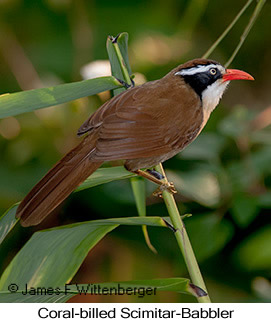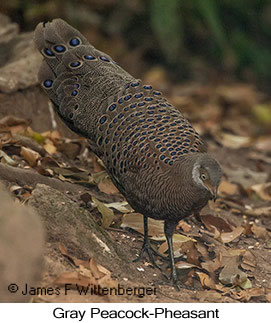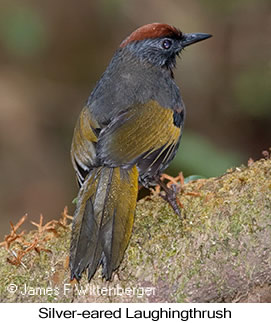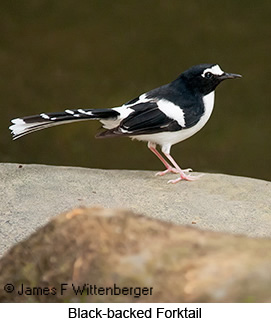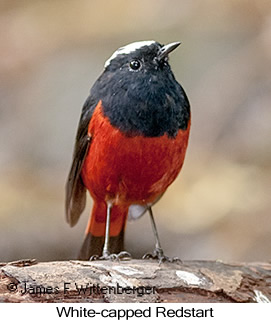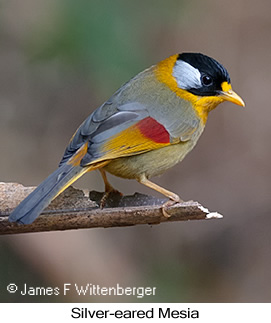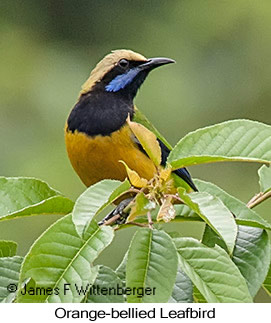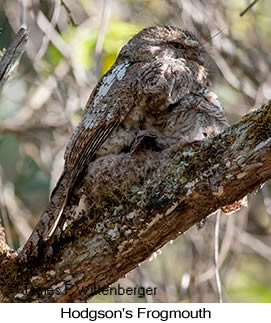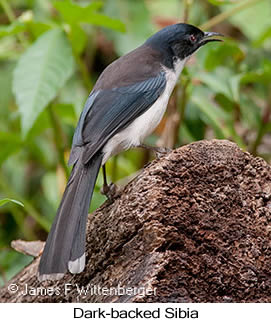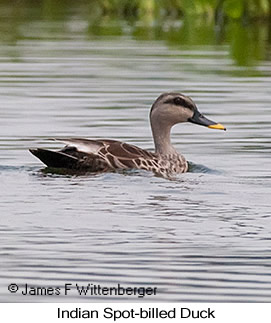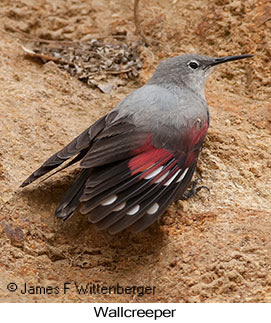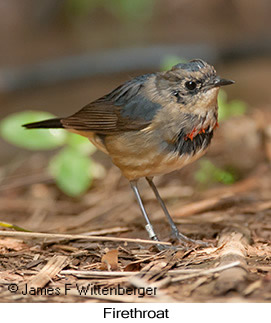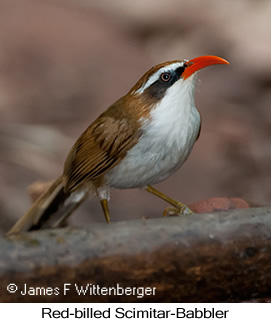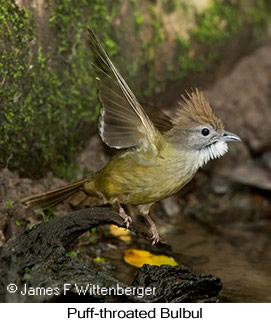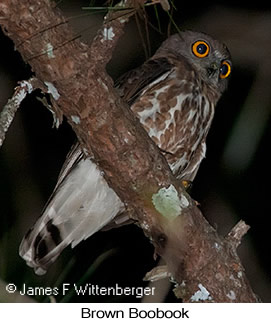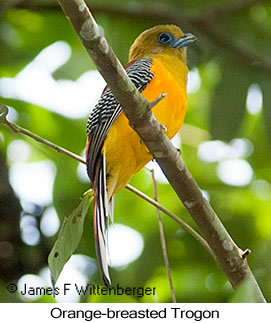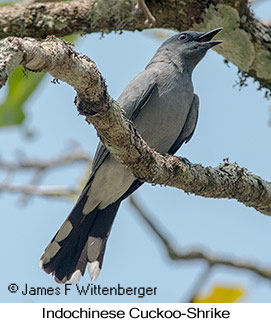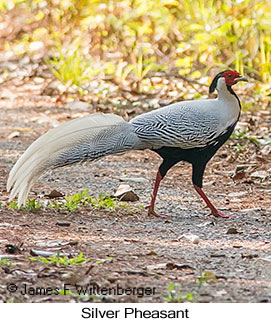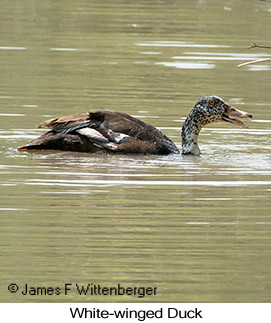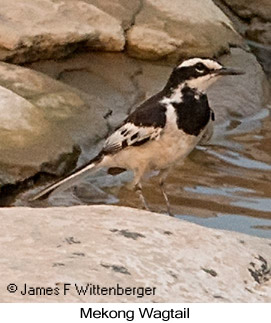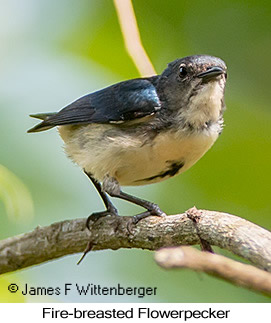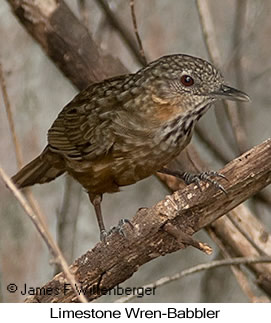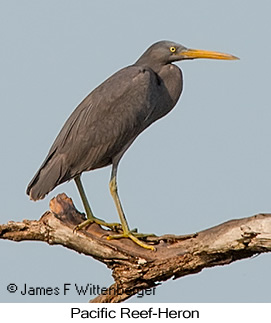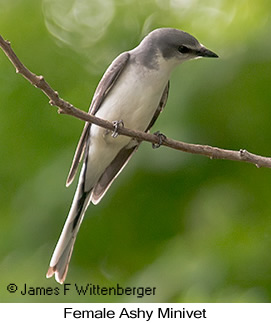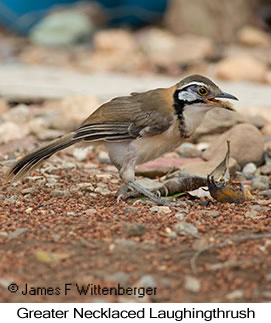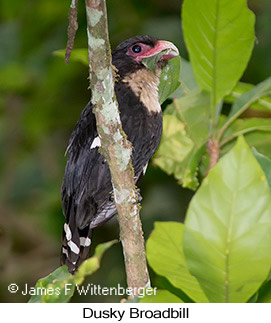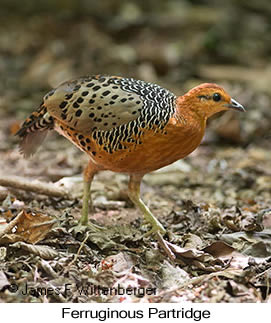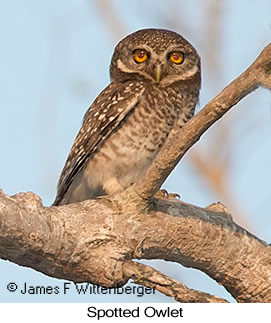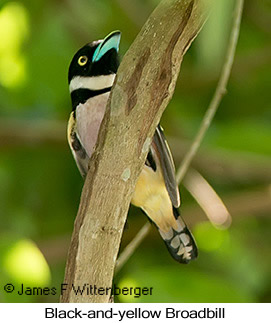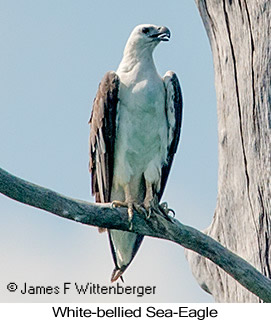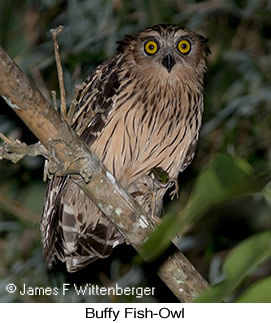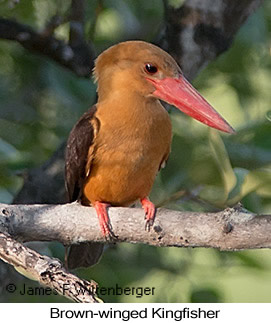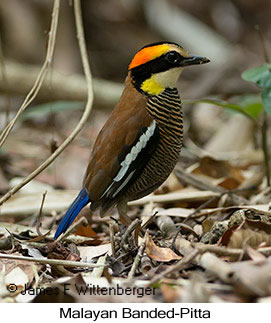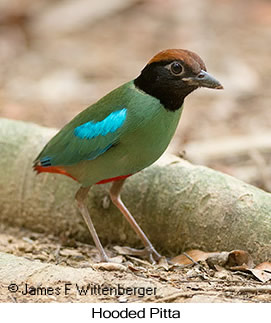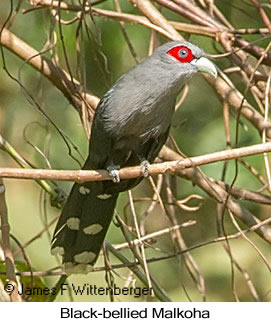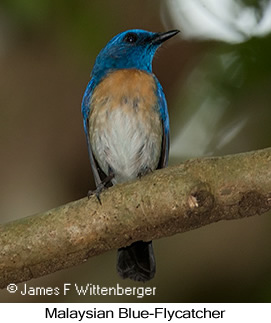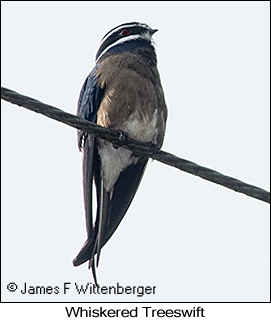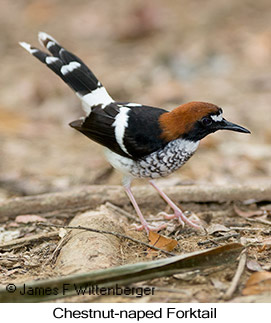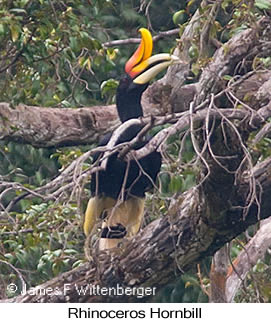THAILAND BIRDING TRIP REPORT

TRIP REPORT
THAILAND
| Start: | 03/15/2015 |
| End: | 04/27/2015 |
| Duration: | 44 days |
| #Species: | 630 |
| #Endemics: | 2 |
| #Heard Only: | 14 |
2015 Thailand Scouting Trip
TOUR DESCRIPTION
My scouting trip to Thailand was planned to cover as many locales as possible with the goal of then offering tours to Thailand in future. To that end I visited many out-of-the-way areas not included on typical tour itineraries, with the result that many more species were seen than on typical tours including many species seldom recorded on those tours. I used guides resident in Thailand who are among the top 5 birders in the country and are in constant contact with other top birders so always up to date on the latest sightings. This was greatly beneficial, allowing me to see 2 accidentals in one day along with many other rarities.
I arrived in country a day early in case there were any travel mishaps, and indeed there were. Due to a flight delay out of the US, my luggage did not arrive with me. After numerous phone calls, my luggage arrived at my hotel after being stranded in Tokyo at 3:45am a day later, less than 2 hours before I was to be picked up at the hotel for the beginning of the tour. All is well that ends well in this case. Between jet lag, loss of sleep before the tour while negotiating sale of my home, a very long flight, and loss of sleep tracking down my lost luggage, I was dragging the first week of the trip so didn't do much night birding and mammal watching at Mae Wong where mammal watching in particular is better than anywhere else in Thailand.
Birding in Thailand is rather different and more challenging than in the Neotropics. Birding tends to be somewhat slow, and a person has to work at it in dense forest as birds are difficult to find and see. We encountered only a few mixed species flocks, possibly in part due to time of year. Many prized species are rather secretive and elusive. A big help for seeing some of these was use of established or portable blinds, which we used much more than I ever have in the Neotropics. After the first few days spent in open areas along the coast, we added only 10-12 new species each day despite really working at it. This is typical for birding in Southeast Asia.
March 16 - We left the hotel at 5:15am for Pak Thale, a coastal area with numerous beds for evaporating salt from sea water and a number of beaches where shorebirds congregate. Wintering shorebirds were everywhere. Our main target bird was Spoon-billed Sandpiper, highly endangered with only 100 or so breeding pairs remaining. We quickly found two of the six known to have been in the area. Both were too far for decent photos. Sometimes it takes hours to find even one so we were lucky to see them right away. We continued on to the Mangrove Research Center down the road where we found a Skylark displaying near the most prominent wat (temple) in the area. After lunch we took a boat out through mangroves to a sand spit where we waded ashore. Notable birds seen were Lesser Sand-Plover, Greater Sand-Plover, the only Malaysian Plovers of the trip, and a single Pallas's Gull in breeding plumage. Our main target bird was White-headed Plover, distinctively different from Kentish Plover and a likely future split. We saw several of those and also several Chinese Egrets, which are rather rare in the area. We then went to nearby Laem Pak Bia, an area of more salt ponds near Phetchaburi. There we found an endangered Black-faced Spoonbill, which has a global breeding population of around 1300 pairs and is a vagrant in Thailand.
March 17 - Up early for a re-visit to Laem Pak Bia to look for Nordmann's Greenshank, reported the previous day by another group but missed by us. While searching for them we found a rare Asian Dowitcher. After a lot of scanning through Common Greenshanks, we finally spotted a single Nordmann's Greenshank for scope view. They look quite different from the picture in the field guide. We saw many Black-tailed Godwits but no rare Bar-tailed Godwits. Ducks were absent, having already migrated north. We then drove 2 hours to Ratchaburi. The habitat has been seriously degraded, with pineapple plantations being replaced by rubber plantations, so birds were few. We did find a single Ashy Woodswallow and Indochinese Bushlark but missed on several other target species. From there we continued on to Bung Boraphet, another 2 hour drive. Once there we drove around an area a half hour south of town looking for Striated Grassbird. It's the best place to find it, and we had good looks at several. We also picked up Yellow Bittern, White-breasted Crake, and had good looks at Blue-tailed Bee-eater and Long-tailed Shrike (not to be confused with Magpie Shrike in Africa that is sometimes called by the same name). We looked hard for Siberian Rubythroat, which we heard but didn't see. It's a species we eventually saw elsewhere.
March 18 - Departed at 6:00am for a scheduled 7:00am boat ride on Bung Boraphet lake. Near the lake we picked up Coppersmith Barbet in the trees, a nice looking and widely distributed species. The boat consisted of a metal platform with rails and a corrugated metal sun roof mounted on a catamaran hull and powered by a modified car engine. We motored through numerous reed beds looking for aquatic species. Birds were mostly quite skittish and would generally fly at some distance, but we did get some photos. Most Pheasant-tailed Jacanas were still in non-breeding plumage but we did find two females in striking breeding plumage. Bronze-winged Jacanas were much less common, and we saw only two just as we were returning to the dock. We saw many Lesser Whistling-Ducks, Cotton Pygmy-Geese, and Garganey along with a few Ferruginous Ducks. Earlier in the season it's possible to see 7 species of ducks, but many had already migrated north by mid-March. We had just one Black-capped Kingfisher along with many Common Kingfishers and lots of herons, egrets, and openbills. We also saw a few more Striated Grassbirds. After lunch we drove about 2 hours to Mae Wong, a less visited national park in the west. Along the side of the entrance road we were fortunate to see a male and female Kalij Pheasant, a rare sighting. After arrival we spent some time in a blind and birded the road. Notable birds included a soaring Rufous-winged Buzzard, Stripe-breasted Woodpecker, Greater Flameback, Olive Bulbul, Buff-breasted Babbler and Blue Rock-Thrush (from the blind), and Long-tailed Sibia. We camped in the park, unlike most international birding groups that stay back in town. Camping in the park allows night birding and saves an hour driving each direction. That night the ranger took a group of Chinese out on a night drive and saw Brown Wood-Owl and a Leopard. I was too tired to go out.
March 19 - We spent all day birding in Mae Wong National Park. We found a pair of scarce and often difficult to find Coral-billed Scimitar-Babblers near the top of the road below the ranger station at Chong Yen. We also saw Green-billed Malkoha, several drongo species, and a variety of bulbuls along with Giant Squirrel and briefly a Pallas's Squirrel. We then returned to the same blind visited the previous day and added Spot-necked Babbler and Streaked Wren-Babbler. That afternoon we sat in the waterhole blind where we had good looks at Yunnan Fulvetta and Silver-eared Mesia. Later we had good but distant views of a pair of impressive Great Hornbills while looking over the valley hoping to see (without success) Rufous-necked Hornbill. In the afternoon I sat in a blind near the ranger station at Chong Yen and had stunning views of a male Gray Peacock-Pheasant, a bird that shows at the blind about 70% of the time. Also seen from the blind was Rufous-bellied Niltava. After leaving the blind we picked up Gray-backed Shrike and Black-throated Laughingthrush at the top of the trail. That night the ranger offered to take us out spot-lighting. He showed up in a pickup truck with the whole back bed already filled with a group of Chinese so we declined his offer. They saw a Clouded Leopard, which would have been nice to see. We cut night birding short due to my being exhausted still from jet lag and lack of sleep the previous days and didn't see anything.
March 20 - At 7:00am we returned to the blind near the ranger station near the top of the road in Mae Wong. Both remaining target birds were there: Rufous-throated Partridge and White-necked Laughingthrush. I also saw a female Gray Peacock-Pheasant but no male. We then walked the trail leading to the waterhole blind looking for Rufous-gorgeted Flycatcher and Eyebrowed Wren-Babbler. We failed to see either, though we did see the wren-babbler later in the tour. At the waterhole blind we added Long-tailed Sibia. Nearby we saw Speckled Piculet and many Striated Yuhina but couldn't find the very rare Burmese Yuhina that had been reported recently in the area. We then drove 5-hours to Mae Ping, arriving shortly after 5:00pm.
March 21 - Mae Ping supports some of the best Dipterocarp forest in Thailand. The habitat is much different than Mae Wong so the birds are also quite different. We spent the morning birding a dirt track off the main road. Mae Ping is especially good for woodpeckers, and we saw several including Gray-capped woodpecker, White-bellied Woodpecker, Lesser Yellownape, Black-headed Woodpecker, and Common Flameback. Other interesting species seen included Chinese Sparrowhawk, Banded Bay Cuckoo, Gray-headed Parakeet, Common Woodshrike, Rosy Minivet, Black-hooded Oriole, Giant Nuthatch, Rufescent Prinia, and Golden-fronted Leafbird. We left Mae Ping at 11:00am and drove 3 hours to Doi Inthanon National Park. We went straight to the top of the mountain on the main road and birded the boardwalk of Ang Ka Nature Trail through a wet forest. There we picked up two of our main target birds, Snowy-browed Flycatcher and White-browed Shortwing but missed the elusive Dark-sided Thrush. We also had good looks at Eurasian Woodcock, Yellow-bellied Fairy-Fantail, Pygmy Cupwing, Ashy-throated Warbler, Rufous-winged Fulvetta, Silver-eared Laughingthrush, and Chestnut-tailed Minla.
March 22 - All morning birding a dirt track up the back side of Doi Inthanon, a track not typically visited by international birding groups as it's too steep for vehicles normally used by them. We had very good birding along the track. Highlights included Speckled Wood-Pigeon (a pre-roosting flock - only place for them in Thailand), Bar-winged Flycatcher-shrike, Hume's Warbler, Blyth's Leaf Warbler, Black-eared Parrotbill (one of our main target birds), Vivid Niltava, and Slaty-backed Flycatcher. That afternoon we returned to the boardwalk where the guide briefly saw Dark-sided Thrush, but I missed it. We did see Ashy Wood-Pigeon, a rarely seen range-restricted species my guide hadn't seen in 2 years. On the way back down the road we saw Mountain Bamboo-Partridge along the road. In the same area we heard a Green Cochoa singing nearby and spent some time looking for it. However, it didn't respond to playback and we couldn't find it. Cochoas are notoriously difficult to see, and we had no success with it. We then sat in a portable blind lower down near a wetland where the guide saw Black-tailed Crake but I didn't because I was blocked by vegetation.
March 23 - All day birding around Doi Inthanon. In the morning we birded the road around Km38 where several good species had been seen around a fruiting tree a few days earlier. Unfortunately, the tree was no longer in fruit and the birds were nowhere to be found. We did pick up a distant Black-winged Cuckooshrike in top of a tree and a pair of Short-billed Minivets along with Gray-capped Woodpecker and the sometimes quite difficult Mountain Tailorbird, which showed well for us. We also saw a male Asian Emerald Cuckoo feeding a female as part of a courtship display. From there we drove to lower elevation where we walked a trail near the park entrance. We heard the skulky Lesser Shortwing several times but couldn't bring one in with playback. We then drove up a side road and walked a short trail where the very scarce Brown-breasted Flycatcher had been reported. We saw a pair of striking Black-backed Forktails fly up the streambed. Forktails are typically skittish, and these were no exception. Nearby we were able to coax a very skulky Slaty-bellied Tesia into the open for brief but good looks. Meanwhile, a group of British birders had spotted the Brown-breasted Flycatcher nearby, so we joined them and had very good looks at this rarely seen and highly localized species. After lunch we went to a stakeout to look for Black-backed Forktail near Mr Dang's place where we were staying. We set up a blind and got good photos. We then went to the gardens lower down to try for Plumbeous Redstart and Common Rosefinch reported there the previous day. We had no luck with either but did get Eyebrowed Wren-Babbler that we missed earlier. Then we returned to the top of the mountain for one last try at Dark-sided Thrush. Third time was the charm. After walking the boardwalk loop a couple times, we finally spotted a pair skulking back in the underbrush behind some wet boggy vegetation. We also had more looks at Eurasian Woodcock and White-browed Shortwing. After dark, we went owling briefly and heard Asian Barred Owlet quite close but couldn't get onto it.
March 24 - After an overnight stay at Mr Dang's Place near Doi Inthanon, we drove to a lower elevation area on the back side of the mountain that features much drier Dipterocarp forest. Our main target bird was White-rumped Falcon, which is occasionally seen there. This was our only chance for it, and we didn't get it. We also hoped to find Collared Falconet, which was also a miss. We did see a Eurasian Jay and some other species that were later seen elsewhere on the trip. We got stuck trying to turn around as we lost traction with the front wheels on the shoulder of the road but got some help from a couple local Hmong people pushing our vehicle back onto the main track. We then drove 3-4 hours to Doi Ang Khang in the far north. After arrival we went to the outlook, located near the Myanmar border. Relations between Myanmar and Thailand have historically been and still are rather unfriendly, so military outposts complete with bunkers, barricades, and barb wire were present on both sides of the border. Our main target bird was Daurian Redstart, which we soon found near the toilets. It showed only briefly. Other interesting birds seen there included Himalayan Swiftlet, Ashy Woodswallow, Long-tailed Shrike, Sooty-headed Bulbul, Yellow-streaked Warbler, Greenish Warbler, Black-breasted Thrush, and White-capped Redstart.
March 25 - We started the day inDoi Ang Khang National Park in the pitta hide hoping for Rufous-breasted Pitta, which didn't show. We did see Silver-eared Mesia, Hill Blue-Flycatcher, and Siberian Blue Robin. We birded around the gardens near the lodge where we picked up Red-whiskered Bulbul, Pied Bushchat, Orange-bellied Leafbird, and Gould's Sunbird. We then returned to the lookout at the top of the mountain where we found Burmese Shrike, Gray-backed Shrike, and Gray Bushchat as fog rolled in from the valley below. From there we drove to a garbage dump area, only place in Thailand to find breeding Siberian Stonechat. My guide quickly spotted one, seen very briefly, but I missed it. We returned after lunch, when I did see it well after quite a bit of searching. We also had good looks at White-cheeked Scimitar-Babbler and White-browed Laughingthrush along with brief but good views of the skulky Scarlet-faced Liocichla. We then birded the road where the main highlight was a secretive and usually difficult to see Hodgson's Hawk-Cuckoo perched deep in the forest but allowing very good views. This species is very scarce in Thailand as it's at the edge of its range. We also picked up Spectacled Barwing along the road.
March 26 - Left early for Doi Lang, a 2 hour drive, arriving about 7:30am. We hoped to see Bamboo Partridge and Hume's Pheasant, which had been seen by some birders who had arrived earlier. No such luck. Too many birders and cars along the road by the time we got there. We did see the fairly common Giant Nuthatch in an area of pines. We also found both Gray-headed and Spot-breasted Parrotbills feeding in bamboo and had very good looks at Bay Woodpecker. That afternoon we had long views of Hume's Pheasant on the road and stopped at a stakeout to see Hodgson's Frogmouth sitting on a nest. Other birds of interest seen this day were Gray-faced Buzzard soaring overhead, Eurasian Hoopoe, Golden-throated Barbet, Stripe-breasted Woodpecker, Large Cuckooshrike, Short-billed Minivet, Clicking Shrike-Babbler (split from Chestnut-fronted Shrike-Babbler and seen very well), White-throated Fantail, Japanese Tit, Rusty-cheeked Scimitar-Babbler, Buff-chested Babbler, Spectacled Barwing, Hume's Treecreeper, Asian Glossy Starling, White-gorgeted Flycatcher, a female White-bellied Redstart, Siberian Rubythroat, Sapphire Flycatcher, and a variety of bulbuls and warblers.
March 27 - We went up the back road to a higher part of Doi Lang, The road is closed off below the top due to border issues with Myanmar, preventing access to a couple target species. On the way up we saw a pair of Bamboo Partridge along the road in bad light. We tried for Collared Babbler and Gray-breasted Parrotbill, both bamboo specialists and both missed. We did see the former later on in the tour. Our best bird was Yellow-browed Tit, only the 4th time my guide has seen it. For a while we sat in a portable hide and put out some mealworms. There we saw Crested Finchbill, Dark-backed Sibia, and Large Niltava. We also saw Wedge-tailed-Pigeon perched in a distant tree, Red-headed Trogon, Blue-throated Barbet, Crimson-breasted Woodpecker, Maroon Oriole, Gray Treepie, Yellow-bellied Fantail, Yellow-cheeked Tit, Striated Bulbul, Bianchi's Warbler, Chestnut-crowned Warbler, Whiskered Yuhina, Verditer Flycatcher, Slaty-blue Flycatcher, and Orange-bellied Leafbird. Visitors must leave the park by 5:00pm so we spent late afternoon driving around the lowlands near Fang where we found Asian Barred-Owlet, a small diurnal owl, in an open area of palm trees and cultivation. Also seen in the lowlands were Terek Sandpiper, Racket-tailed Treepie, Dusky Warbler, Chestnut-capped Babbler, Black-collared Starling, and Streaked Weaver.
March 28 - Left early for Chiang Saen, about 2½-3 hour drive on good roads. Our first stop was a dirt quarry outside town where a Wallcreeper had been seen for the past two weeks, second record of this species in Thailand. We quickly found it and spent quite some time photographing it. We continued on to the nearby town of Chiang Mei where we visited Nam Kham Nature Reserve, a private reserve of seasonally flooded wetlands. The reserve features wetlands, extensive bamboo, and previously cultivated land now partly covered by early succession forest. Birding is mostly from boardwalks constructed of bamboo. We sat in a blind for a couple hours hoping to see the Firethroat, first record for Thailand, that had recently been reported there. With patience a male came in to the small artificial waterhole. It was molting into adult breeding plumage. Thus, we had seen two accidentals in a single morning! I then sat quietly near some reedbeds around permanent water and eventually had good views of Slaty-breasted Rail. After lunch, I returned to the same spot and had good views of Ruddy-breasted Crake. I also had brief views of a very skulky migrant Baikal Bush Warbler in the reed beds. Late that afternoon we found a female Plaintive Cuckoo on a bare stick near the ground posing in the open.
March 29 - We spent several hours in the morning walking a dirt road through rice paddy fields south of Chiang Saen looking for buntings. We saw none. The best birds were two female Bluethroats. After lunch we went out on a motorized boat on Chiang Saen Lake. Typically one sees 6-7 species of ducks. We saw 3 species, Lesser Whistling-Duck, Indian Spot-billed Duck, and Garganey, as most had already migrated north. All were quite common. The ducks were wary and mostly flew at some distance so they were a bit difficult to photograph. Aside from the usual water birds, we had good looks at Pheasant-tailed Jacana in breeding plumage and flushed a Yellow Bittern in front of the boat. After lunch we went to an area around the lake where a vagrant Common Shelduck had been reported, where we soon found it. We spent the rest of the day birding areas near the lake. We didn't visit the stakeout for Australasian Grass-Owl as the exact site is a closely-held secret and other birders were in the same area at the time. Notable birds seen after the boat trip included Green-billed Malkoha, Burmese Shrike, Thick-billed Warbler, Zitting Cisticola, Chestnut-tailed Starling, and Chestnut Munia.
March 30 - Our first stop was the waterfront in Chiang Saen where we searched for Gray-throated Martin to no avail. The riverbanks have been covered with concrete and stone for flood control, so nesting sites are now gone. As a result the martins are also gone. They can still be found farther south, but we hadn't included that area on our itinerary and didn't have the time to go after them. We did see a rarely seen Barred Buttonquail fly across our path near the river. From there we drove 6 hours to Doi Phu Kha National Park, stopping only for lunch and gas. After arrival, we had time for some late afternoon birding. The park ranger took us up the road to a nest site of Chestnut-bellied Nuthatch, one of our main target birds there, where we had excellent views of this often missed species.
March 31 - We left at 6:30am for a trail up the mountain at Doi Phu Kha to look for Beautiful Nuthatch. The trail was a rather grueling, steep hike 5-6 hours up to the top. They don't believe in switchbacks there and the elevation gain was close to 1000m. We spent 3 hours searching everywhere and failed to find the nuthatch. The ranger went was with us and took us to a previously used nesting tree. Unfortunately, it was inactive during our visit. All in all it was pretty frustrating, but we wanted to make the try for this prized species. We did see Blyth's Shrike-Babbler, Black-eared Shrike-Babbler, and Asian Stubtail, the only ones seen during the trip. We also had a brief but good look at Silver-breasted Broadbill, a bird not readily seen.
April 1 - During a little morning birding around Doi Phu Kha, we picked up Great Barbet, Gray-backed Shrike, and a few others before heading out on a 6-hour drive to Phu Suan Sai. This park features mixed tropical evergreen forest with extensive bamboo and is especially good for bamboo specialists. We arrived at 4:20pm and set ourselves up in a portable blind near a waterhole. Birds of interest we picked up included White-throated Fantail, Pin-striped Tit-Babbler, Red-billed Scimitar-Babbler, Gray-throated Babbler, Rufous-throated Fulvetta (one of our target birds), and Buff-breasted Babbler. That night we went out looking for night birds and saw Large-tailed Nightjar. We heard several owls and the scarce Malaysian Nightjar but couldn't bring any in with playback.
April 2 - Still at Doi Phu Kha, we went out with the ranger looking for key species, especially Short-billed Parrotbill, without success. We then birded a trail filled with bamboo leading from the superintendent's house. Playing an Asian Barred Owlet call pulled in Speckled Piculet, White-browed Piculet, White-bellied Erpornis, Oriental White-eye, and Brown-cheeked Fulvetta along with five Short-billed Parrotbills. We had very good looks at a group of Collared Babblers in bamboo, a species I had missed earlier. Other birds seen included Black Baza, Plaintive Cuckoo, Long-tailed Broadbill, Great Iora, Scarlet Minivet, White-throated Fantail, Puff-throated Bulbul, Yellow-bellied Warbler, and Blue-winged Leafbird. That afternoon I sat in a blind for a couple hours near a waterhole. All I saw were Flavescent Bulbul, Gray-eyed Bulbul, Gray-throated Babbler, and White-rumped Munia. Meanwhile, my guide saw Gray-backed Forktail from a nearby bridge over a creek. When we went back later, it failed to show for me. That night we went owling along the road and heard several but saw none - just Large-tailed Nightjar again.
April 3 - First thing in the morning we went back to the bridge looking for Gray-backed Forktail. No sign of it. We set up a blind near the waterhole blind and put out some mealworms hoping for pittas to show. None did. I did pick up Rufous-throated Fulvetta (an uncommonly seen target species and only ones of the trip) and Buff-breasted Babbler. We then returned to the bridge where I had fleeting looks at Gray-backed Forktail flying down the creek and disappearing. From there we drove 2 hours to Phu Hin Rong Kla, where we had only limited time to find our 3 target species due to a scheduling oversight. We didn't actually go into the national park and just birded the access road leading to it. Right off we found many (probably over 100) Nepal House-Martins, one of our targets. This is the only place they occur in Thailand and are hit and miss to see. We searched the skies for our second target, Dusky Crag-Martin with no luck. Walking the road higher up, we found two nesting pairs of our third target, Jerdon's Bushchat. This rarity is also found in very few places in Thailand. We hoped to find Chestnut-eared Bunting without success. Indeed, we didn't see any buntings the entire trip, probably because we were a bit late in the season for them and the mild winter farther north meant fewer if any came south. The same was true for migratory thrushes. Going back down the road, the house-martins were completely gone already, indicating how sporadically they occur. After trying to get photos of the male bushchat without success, we continued on to Nam Nao, stopping en route for lunch. There we had very good views of Golden-crested Myna atop a tree in the parking area in front of the visitor center and spotted a Eurasian Jay in forest edge along with several striking White-crested Laughingthrushes hopping about like jumping mice in a grassy area by the cabins. We then birded a well maintained trail through broadleaf forest with lots of bamboo leading from near the visitor center. Interesting birds included a female Red-headed Trogon, Bronzed Drongo, Black-naped Monarch, and Asian Fairy-bluebird. We had a bit of a to-do when the ranger informed us that a rogue Asian Elephant was rampaging in the campground adjacent to the cabins where we were staying. They had us park our vehicle in an enclosure so it wouldn't be damaged by the elephant, which we never did see. While that was being sorted out, we went looking for owls and found a Brown Boobook along the road.
April 4 - Just as we left the cabins area we picked up a flock of Blossom-headed Parakeets flying by for brief views. My guide had never seen them in that area before, as they're usually higher up. The trail from the cabins to the campground was blocked by an electric fence to keep elephants away, so we walking around the long way to get to the other end of the trail. We quickly spotted a male Red-headed Trogon that posed nicely for us. We also saw a Red Muntjac in the clearing near the forest edge. Along the trail we had decent views of Rufous Woodpecker on the end of a branch sticking out from a dead stump behind some vegetation along the trail. We also saw Black-and-buff Woodpecker in the same spot. Nam Nao is very good for woodpeckers, and we saw 7 species altogether. We had excellent looks at Orange-breasted Trogon farther along the trail. The guide saw Alstrom's Warbler in the same area, which I missed, only one of the trip. I had brief looks at Bar-backed Partridge on a wooded slope while the guide was walking ahead of me. Other birds seen along the trail included Coppersmith Barbet, Great Barbet, Blue-throated Barbet, White-bellied Woodpecker, Large Woodshrike, Black-hooded Oriole, Greater Racket-tailed Drongo Black Bulbul, Ashy Bulbul, Greenish Warbler, Two-barred Warbler, Puff-throated Babbler, Korean Flycatcher, Plain Flowerpecker, Ruby-cheeked Sunbird, Little Spiderhunter, and Forest Wagtail. Along the creek we had very good looks at White-crowned Forktail but couldn't get photos. Near the end of the trail my guide spotted a Banded Kingfisher perched quietly in thick foliage in a tree. This species is tough to spot as it often sits unobtrusively for long periods. Back at the visitor center we had good looks at Red-billed Blue-Magpie and Common Green-Magpie coming in to the area behind the restaurant where food scraps were being discarded. That afternoon we went out birding again. It was quite hot and we saw little other than very good views of a Greater Yellownape. We tried again for owls that night and heard a couple but saw none.
April 5 - Spent most of the morning birding the upper trail that branches off from the trail taken the previous day. This trail goes through somewhat different habitat than the lower trail. Along the trail we lured in a pair of Large Scimitar-Babblers for good views. At the top of the trail we had good though distant looks at perched Blossom-headed Parakeet and Vernal Hanging Parrot. Other species seen included a soaring Crested Goshawk, Collared Babbler, Black-capped Babbler, and a female migrant Blue-and-white Flycatcher (the only one of the trip). We failed to find Silver Pheasant in the usual ravine along the creek near the end of the trail. In late morning we left for Phu Kheio Wildlife Sanctuary, a private reserve several hours away. We arrived at 2:45pm after stops for lunch and supplies. The guide saw a Brown Hornbill near the free accommodations just after we pulled up, but I missed it. This species was one of our main targets there, and it's tough to find as it's very uncommon, tends to be in forest, and moves around a lot. While standing around hoping it would come back, we had fabulous views of the hard to find Indochinese Cuckooshrike plus Ashy Drongo. The free accommodations were extremely basic with mats on the floor, no furniture, and pit toilets out back. We were able to arrange better accommodations, though still basic, for a nominal cost. We went out birding along the road and saw pretty much nothing. Down by the lake we sat near the shore hoping to see White-winged Ducks coming in at dusk. No luck. A few interesting birds were seen including House Swift, Black-capped Kingfisher (distant view), and Oriental Pied-Hornbill (flying by a long ways off).
April 6 - While eating breakfast at 6:30 we had two Great Slaty Woodpeckers flying around behind our cabin. We had great looks as they flew back and forth in response to playback, but I never could get decent photos of these spectacular birds due to a camera malfunction. The rest of the morning we birded roads, as visitors are not allowed on the trails without a ranger in this private reserve and none were available to go with us. Early on we had the amazing good fortune of seeing a Coral-billed Ground-Cuckoo along the edge of the road. Usually the best place for this bird, and problematical there, is Khao Yai National Park. We had good views of Crested Serpent-Eagle perched in the open. Our previous sightings of this species had all been of birds soaring high overhead. We heard White-handed Gibbons nearby but never got looks at them. Then along a gravel road we encountered a male Silver Pheasant, which we watched and photographed for some time. What a beautiful bird! After the pheasant we drove a dirt road where we spotted an endangered White-winged Duck, which gave us great looks as it swam to cover. Since this species is being raised and released, one has to be careful about what is a "countable" wild bird and what isn't. Its behavior led us to believe it was a wild bird since it was furtive and not trusting of people, unlike newly released birds. We later saw the bird was banded, so it presumably had been released at one time. It's a gray area as to when a released bird becomes a wild bird, but we counted it on the basis of its behavior. The tame birds will typically act like ducks in a park, and this one didn't behave that way. We also saw Moustached Barbet, Asian Fairy-bluebird, and Blue-winged Leafbird along the roads. Birding was slow along the roads after lunch. At 3:00pm we went to the waterhole blind where we had a lot of activity. Of special note was Green-legged Partridge that appeared near the blind back in the undergrowth and a male and female Siamese Fireback that came in to the waterhole. While sitting in the blind, we heard Brown Hornbills nearby. We got out of the blind and saw several, mostly partially obscured by dense foliage but a few briefly in the open. That was one of our main target birds and our only good chance for them. Other birds coming in to water included White-bellied Erpornis, Black-naped Monarch, Gray-headed Canary-Flycatcher, Black-headed Bulbul, Black-crested Bulbul, Gray-eyed Bulbul, Ashy Bulbul, Pale-legged Leaf Warbler (a typically secretive and somewhat difficult species to see), Eastern Crowned Leaf Warbler, Puff-throated Babbler, Buff-breasted Babbler, Brown-cheeked Fulvetta, White-crested Laughingthrush, White-rumped Shama, Hill Blue-Flycatcher, Siberian Blue Robin, Blue Whistling-Thrush, and Taiga Flycatcher.
April 7 - We left early for the Mekong River beyond Ubon Ratchaburi. It's a long drive and we only stopped for lunch and gas. We arrived at 3:15pm and went looking for our target birds, which are out on the rocks a little way offshore. It's usually possible to get out on the rocks without a boat, but the water level was higher than normal. Water levels fluctuate quite a bit based on how much water is released by Chinese dams upriver. We drove over to a nearby village where we arranged with a local man to take us across the channel in his boat. We spent an hour or so out there and found a nesting pair of Great Thick-knee, many River Lapwings, and several Mekong Wagtails. With all target birds seen, we called it a day at 5:40pm.
April 8 - It's a long drive west to reach Khao Yai. The original plan was to stop at Sakaerat to look for Siamese Fireback, but since we had already seen that species at Phu Keio, we drove straight to Khao Yai, arriving about 3:00pm. I was feeling a bit under the weather due to some diarrhea I'd picked up, which persisted several days, but the birding must go on. We checked out a scrub area near our hotel, located a half hour from the park, and found Orange-headed Cisticola. We took a break the rest of the day.
April 9 - First thing in the morning we drove the half hour to Khao Yai National Park. Upon our arrival we had five Brown Hornbills fly across the road for brief views. They're usually very difficult to see there. We had distant views of three Wreathed Hornbills in a tree. We picked up one of our target birds, Barred Cuckoo-Dove lurking back in trees along the road. We looked for Coral-billed Ground-Cuckoo along the usual road where it's typically found since another group had just seen it, but this secretive species didn't show for us. It's only a 10% chance to see it on any given visit to Khao Yai. We did get good looks at Laced Woodpecker, our second target species. We saw the red-throated subspecies of Black-crested Bulbul and the buff-throated subspecies of Fire-breasted Flowerpecker (both likely future splits). Other good birds seen were Moustached Barbet and Dark-necked Tailorbird. That afternoon we re-visited the field outside our hotel and found Gray-breasted Prinia and Yellow-eyed Babbler. From there we went to a bat cave where raptors sometimes hunt bats emerging at dusk. The usual access is now gated off as homes under the cliff face are upscale and people want their privacy. We found a back way into the area, and one of the property owners kindly allowed us access to the road where we'd have a good view. Before the bats emerged we had good views of perched Black Baza and Oriental Pied-Hornbills.We saw a lot of bats emerge around 6:20pm, but the only raptor seen was a Shikra.
April 10 - Departed early for the coast, where we planned on birding Man Nai Island, a migrant trap, for two days. It's a 2-3 hour drive but we made several birding stops en route. First up were limestone cliffs near Saraburi where we soon found Limestone Wren-Babbler. Then we continued south to an area of dried out rice fields lying fallow. We found a single Australasian Bushlark after considerable searching. We also found a small, loosely organized colony of Asian Golden Weavers constructing nests in an irrigation canal along the road. We arrived at the coast by 3:45pm. Since there's no birding around there, it was a good time to relax. We could have gone across the road to the beach to hang out with the mostly Thai tourists, but I chose to rest instead.
April 11 - Man Nai Island is a hotspot for migrants making landfall after crossing the Gulf of Thailand from Indonesia and other wintering grounds to the south. It's a great place to look for rarities. The island is located a half hour off the coast west of Bangkok and is reached by chartered boat. A friend of my guide has been banding birds there the past several years but didn't have his nets up due to family issues. Normally, he doesn't welcome birders but makes an exception for his friends. We shared the boat with Dave Sargeant from North Thailand Birding and two of his British clients. Everyone spread out on the island but stayed in touch with walkie-talkies. A few people saw Slaty-breasted Rail, which I missed but had seen earlier in the trip. My guide also saw Ruddy Kingfisher, which I missed but eventually saw at Phang Nga. Dave found a rare male Narcissus Flycatcher, which I saw well but others missed. It was the first record of it in 2 years. That afternoon we saw a male Japanese Paradise-Flycatcher in a grove of trees, another rarity on Man Nai and increasingly rare even in Japan due to loss of habitat. Other interesting birds included Pacific Reef-Heron, Gray Nightjar (flushed along the paved trail around the island), Mangrove Whistler, Greenish Warbler, Two-barred Warbler, Asian Brown Flycatcher, Mugimaki Flycatcher, and Eyebrowed Thrush. A torrential rainstorm hit the island at 4:30pm. We took cover in a pavilion used to give presentations about endangered sea turtles to visitors. The rain let up at 5:30pm right when we were scheduled to leave the island.253April 12 - Another day on Man Nai. Birds present the previous day had thinned out some. We spotted an elusive Pin-tailed Snipe, which took off for the mainland when we flushed it. My guide found an extremely rare Yellow-vented Pigeon which one of the British birders also saw well. We spent some time looking for it but I only got brief looks as it flew. It was only the second record of this species on Man Nai. We found a Gray-tailed Tattler on the rocks along the shore, a rare passage migrant in Thailand. Mid-morning we found a Hooded Pitta back in the forest, where I had good looks but couldn't get photos. It was my first of several pittas for the trip. In the open area around the staff quarters we flushed a Himalayan Cuckoo, which we saw well several times, and found Ashy Minivet, Japanese Paradise-Flycatcher, and Two-barred Warbler. Other interesting birds seen on the island this day were Shikra, Chestnut-winged Cuckoo, Tiger Shrike, Yellow-browed Warbler, and Blue Rock-Thrush. We left the island at 5:00pm.
April 13 - Departed for Kaeng Krachan at 6:00am. En route to Bangkok we stopped at Bang Phra, our last chance for Speckled Woodpecker. There was plenty of good habitat (dead trees near water), but no woodpecker. There were lots of Asian Openbills and egrets. We had good views of Blue-tailed Bee-eater, Lineated Barbet, and Ashy Minivet. We saw a single Asian Pied Starling in a dead tree and had distant views of Black-headed Ibis. From there we drove west through Bangkok, arriving at Kaeng Krachan about noon. On the approach road we flushed a Yellow-legged Buttonquail from the road, giving us brief views before it scurried into the underbrush. After lunch we visited the waterhole hide at Baan Song Nok where our main target birds were Lesser Necklaced Laughingthrush and Greater Necklaced Laughingthrush. Both were at feeders in front as we arrived. They're both rather secretive birds and normally only seen from the hide. We saw a lot of birds from the hide, including a pair of Kalij Pheasants along with Black-naped Monarch, Black-crested Bulbul, Black-crested, STripe-throated Bulbul, Streak-eared Bulbul, Puff-throated Babbler, Abbott's Babbler, Brown-cheeked Fulvetta, and Siberian Blue Robin. That night we went owling and had good looks at Oriental Scops-Owl.
April 14 - We started the morning in the lower section of Kaeng Krachan. We quickly found a perched Black-thighed Falconet near its nest hole. We had distant but good views of Oriental Pied-Hornbill and saw a migrant Chinese Sparrowhawk fly by. We had good views of Greater Yellownape, Greater Flameback, Black-and-red Broadbill, the latter building a nest, and Sultan Tit. We continued up the road to a stakeout of both Buff-rumped Woodpecker and Black-and-Buff Woodpecker nesting in adjacent dead trees. We saw both. Nearby we also briefly saw an often difficult to find Ratchet-tailed Treepie back in the forest. Typically, it takes some real searching to find this species. We ran into it almost right away. We continued to the top of the road, where birding was slow and we saw nothing new. On the way down we had better looks at both woodpeckers and excellent views of Dusky Broadbill near its nest. This rather secretive species is usually very difficult to find. Farther down the road we had good looks at two Emerald Doves near a pond. Other interesting birds seen included Red-headed Trogon, Black-capped Kingfisher, Indian Roller, Great Barbet, Green-eared Barbet, Crimson-winged Woodpecker, Laced Woodpecker, Black-winged Cuckooshrike, Lesser Racket-tailed Drongo, Ochraceous Bulbul, Yellow-bellied Warbler, and Rufous-fronted Babbler. That night we went owling and quickly found a Collared Scops-Owl eating a small snake.
April 15 - Back to Kaeng Krachan. Our first target bird of the morning was Red-bearded Bee-eater, which had been reported at the end of the road 6km beyond the viewpoint. However, we bumped into a group that had found a nest much farther down, before the woodpecker nest sites seen the previous day. We had great views of a pair bringing food to their young. We heard Yellow-vented Pigeon but couldn't find a fruiting tree that might draw them in. My guide saw this bird on Man Nai, but Kaeng Krachan is the usual place to find them. We dropped back down to a lower elevation hide site where people had reported the infrequently seen Ferruginous Partridge the day before. The birds hadn't been seen there the previous 5 days. While sitting in the hide, we heard Rusty-cheeked Hornbill (split from Brown Hornbill), a difficult and very locally distributed bird to find. My guide had brief looks and said it had flown off, but I walked a short distance farther down the trail and had good looks at them in a distant tree. Interesting how we saw both "Brown Hornbills" while sitting in blinds. While I was doing that, Hooded Pitta and Orange-headed Thrush showed up at the blind. Back in the hide I had good looks at the pitta but the thrush never showed again. I sat in the blind from 11:00am to 3:30pm. I did see Chinese Blue-Flycatcher. At 3:15pm the partridges showed. I had great views of both male and female Ferruginous Partridge, a much more striking bird than the pictures in the field guide suggest. Also seen along the road were Kalij Pheasant, a male Mountain Imperial-Pigeon courting a female rather vigorously, Silver-breasted Broadbill on a nest, Ashy Drongo, Olive Bulbul, Collared Babbler, and Slaty-backed Forktail (much better looks than previously).
April 16 - The day began with a visit to Wat Khao Luk Chang, located a half hour from our hotel. On the way there we spotted a Small Asian Mongoose crossing the road. Our main target birds were Spotted Owlet, Blue-throated Bee-eater, and Rufous Treepie. We quickly found the owlet and, with a little walking around, the treepie. The bee-eater was another matter. Finally, on our way back to the parking lot, a Blue-throated Bee-eater flew overhead and landed in a distant tree where we had decent views of it. While walking around, we also found Cinnamon Bittern and a female Greater Painted-Snipe in the wetlands and a pair of Eurasian Hoopoes in the act of procreating while perched on a branch along the trail. Other interesting birds included Blue-tailed Bee-eater, Red-breasted Parakeet, Black-naped Oriole, Korean Flycatcher, and Eyebrowed Thrush. After lunch we drove to Chumphon, stopping at a reedbed en route where we found a Manchurian Reed Warbler. The main reason birders visit Chumphon is to take a boat out to a small island offshore to see Pale-capped Pigeon, a winter visitor that had already left by the time we got there. We drove around the beach area looking for Venous-breasted Starling, which is supposedly fairly common. No luck. We then went over to the soccer pitch in town, where we eventually found a single pair hanging out on the grass. From Chumphon we drove to Nam Tok Ngao Waterfall National Park. There we found a pair of Blyth's Hawk-Eagles soaring high overhead. Eventually they came lower, giving us very good views. We also had distant scope views of a migrant Dark-sided Flycatcher, a species we feared we'd been too late to see.
April 17 - We left at 5:45am for Kaeng Krung National Park, a substitution for Chumphon. In the parking area we found many Glossy Swiftlets, usually hard to find, plus a few Brown-backed Needletails and a single Gray-rumped Treeswift. We walked across a stream along a gravel access road through good forest and had good views of Banded Woodpecker, Black-and-yellow Broadbill, Rufous-crowned Babbler, and later Rufous Piculet. We had a short look at Black-belled Malkoha and picked up a Crested Serpent-Eagle soaring overhead, initially very high and then much lower. After lunch we continued on to Khlong Saeng Wildlife Sanctuary adjacent to the very large and mostly inaccessible Khao Sok National Park. We took a boat out to our accommodations, spending 3 hours birding en route. We had good looks at White-bellied Sea-Eagle, which is common, distant views of Blue-eared Kingfisher, and brief looks at a pair of White-handed Gibbons. We arrived at our accommodations in late afternoon. The very basic accommodations are primitive bamboo huts on floating bamboo piers with sleeping mats on the floor instead of beds and no privacy other than bamboo walls between huts. The government doesn't allow any construction on land in the sanctuary other than toilets. At dusk we spotted a pair of Bat Hawks soaring overhead while sitting on the floating pier drinking beer. After dinner, we went back out on the boat. It was new moon and very dark but we found a Buffy Fish-Owl with a frog in its talons. A party of rather rowdy Russian sport fishermen were there, but they quieted down before the generators were shut off at 10:00pm. Despite the inconveniences, this area is worth the visit. It's one of the most scenically beautiful and tranquil places in all of Thailand, with the reservoir dotted with vertical limestone karsts jutting up everywhere almost like a magical wonderland.
April 18 - Birding by boat before breakfast, we found two groups of White-handed Gibbons calling back and forth near a fruiting tree. We watched them for some time before moving on. They were a bit too far away for decent photos. We had distant but good views of Great Hornbills and had a pair of Helmeted Hornbills fly directly overhead. We also found two Lesser Fish-Eagles along with many Rufous-bellied Swallows nesting near the base of a limestone cliff. We tried hard for Dusky Crag-Martin, but nary a one was to be found. After breakfast we took the boat back to the main entry, enjoying the sun and beauty of the place but not seeing anything new. On our way south we stopped at several places, starting with Kapong Bridge where we picked up Chestnut-headed Bee-eater and White-throated Kingfisher. We stopped at Laem Pakarang, a beach area on the Gulf of Thailand side where a rare Crab-Plover had recently been reported. We saw no sign of it but saw a number of shorebirds including Terek Sandpiper, a new one for the trip. We then visited a staked out roost site in a park across from Thang Muang beach where we eventually found Spotted Wood-Owl. After the owl stakeout, we went to a watercress cultivation area where we found a female Watercock, always difficult to see, and our only Richard's Pipit of the trip. Nearby down the road we had good views of Blue-winged Pitta that had flown up into a tree in response to playback. By late afternoon we had reached the main entrance to Phang Nga National Park, where we walked a short concrete walkway into mangroves. There we found a Ruddy Kingfisher hiding low down among the mangrove roots. We also had excellent views and a photo op of Brown-winged Kingfisher along the river. It was great to have such good views of this sometimes hard to see and quite range-restricted species.
April 19 - The day began with birding a different, more extensive area of mangroves around Phang Nga. We hoped to find Mangrove Pitta but couldn't raise one. In fact we didn't see much of anything until the end of the boardwalk, where we had good views of Golden-bellied Gerygone and Scarlet-backed Flowerpecker. Along the road we found a pair of Jungle Mynas on the way out. Despite their name they prefer more open roadside scrub rather than dense jungle. We continued to a smaller area of mangroves where we found two Mangrove Pittas singing. With a little effort we had very good views of both but never could get a photo. While there we also picked up a pair of Olive-winged Bulbuls. Then we drove to Sri Phang Nga National Park. At the park we spent an hour in our portable hide at a stakeout for Malayan Banded-Pitta. All the space for hides had been taken over by some Thai photographers, who had left their hides in place while off to lunch. We squeezed our hide in between theirs and soon had astonishing views of both Malayan Banded-Pitta and Hooded Pitta. We also had fantastic views of Chestnut-naped Forktail, which is normally best seen from a hide placed along the nearby creek. We left about the time the Thai photographers returned, having seen and photographed our target birds. We birded along the road a bit before setting up our hide by a different small creek where birds come in to bathe. Seven bulbul species had been seen there the previous day. I saw five - Stripe-throated, Spectacled, Hairy-backed, and Gray-eyed. We spent the rest of the afternoon birding the road but finding nothing new.
April 20 - This day promised to be very special. We were up at 3:45 to meet a local guide who had a hide set up near a Great Argus dispersed lek on the back side of Sri Phang Nga. The site is a closely guarded secret and only a few birders who can be trusted to not disturb the birds are allowed to visit because people who are inconsiderate can scare them permanently off. Great Argus is certainly a prize, and though often heard it's rarely seen. We waited around until 4:30am when our local guides (now two of them) showed up on motorbikes. Their car had been in a wreck, so they had to borrow motorbikes instead. My guide and I sat on a metal platform bench welded to the side of a motorbike while we drove for half an hour first along a paved road, then a dirt road, and then a bumpy rocky road, all in the dark. That was rather bone-jarring. We then hiked half an hour up a rocky creek bed (no trail) by flashlight, arriving at the hide about 5:30am before first light. Then we waited. We soon heard a Great Argus calling nearby, and shortly thereafter it came out in the open on its well-cleared display area in the forest. The skies were overcast and we couldn't use flash, so we were shooting photos at very slow shutter speeds. What a special experience, watching that bird display for the next three hours! Then we hiked backed down the creek bed, endured another bone-jarring ride back to our motel, packed, and headed south to Khao Nor Cuchi. En route we stopped in some remnant forest north of Krabi at a stakeout for Fluffy-backed Tit-Babbler. The bird was no longer there. From there it was an hour and a half to Khao Nor Cuchi, famed as the only site in Thailand for the endangered Gurney's Pitta. Sadly, the bird has not been seen now for a couple years and may well be extirpated in Thailand. That afternoon we birded the road in KNC. Things were quiet but we did find a Red-throated Barbet excavating a nest hole. We also found a Puff-backed Bulbul along the road. On the grounds around the park headquarters we found a striking male Van Hasselt's Sunbird.
April 21 - First thing in the morning we found a Little Bronze-Cuckoo perched on an open branch in a tree on the motel grounds. This species is usually a difficult bird to get. It seemed to be nesting there. We then walked a trail in KNC that led to the Emerald Pool and Blue Pool hoping to see babblers. None were to be had. We did see 4 species of spiderhunters - Thick-billed, Yellow-eared, Spectacled, and Gray-breasted. We also saw Raffles's Malkoha, Olive-winged Bulbul, Orange-bellied Flowerpecker, and Plain Sunbird. After an early lunch we left for Krung Ching, 3½ hours away. Once there we birded the access road down to the viewpoint where we had distant views of two Blyth's Hawk-Eagles flying over. My guide saw a Silver-rumped Spinetail, which I missed but did see the next day. We also found Black-bellied Malkoha, Rufous Woodpecker, Great Iora, Fiery Minivet, Brown Shrike, Dark-throated Oriole, Gray-headed Babbler, Tickell's Blue-Flycatcher, and Blue-winged Leafbird.
April 22 - We left early for an essentially all day hike up the waterfall trail, which offers the best birding in Krung Ching. Numerous police passed us early on. We learned later they had had reports of a dead body on the trail. Fortunately, it turned out the report had been greatly exaggerated - no body was found. Also fortunately, the police had not closed the trail to the public. Birding was very good. We had excellent looks and a photo op of the always difficult Maroon-breasted Philentoma. We also had good views of a pair of Fluffy-backed Tit-Babblers feeding young. We heard Moustached Babbler but couldn't lure it in with playback. We hiked up as far as the pavilion, not all the way to the waterfall. My guide went up another kilometer looking for signs of Malaysian Rail-babbler and found none. On the way back down we had stellar views of a striking male Scarlet-rumped Trogon along with many good looks at Red-throated Barbet. At the base of the trail we found a pair of rare Horse-tailed Squirrels. In the same area we had good looks at Crimson-breasted Flowerpecker and Yellow-vented Flowerpecker feeding in a flowering tree. Other interesting birds seen included Thick-billed Pigeon, Ruddy Kingfisher, Sooty Barbet, Blue-eared Barbet, Maroon Woodpecker, Great Iora, Rufous-tailed Tailorbird, Chestnut-winged Babbler, Black-throated Babbler, Short-tailed Babbler, and Gray-breasted Spiderhunter. Back at the viewpoint late that afternoon we found Silver-rumped Spinetail, Bamboo Woodpecker, and Buff-rumped Woodpecker.
April 23 - Next morning in Krung Ching we birded a new trail that begins near the waterfall trail and had a much better look at Thick-billed Pigeon perched in a tree. We then did a second short trail along a creek looking for Rufous Kingfisher and Black-capped Babbler, a likely place for both. We got caught in a brief rain shower, the first of the trip during daylight. My guide had fleeting looks at the babbler. There was no sign of the kingfisher. We then drove to Thale Noi, stopping at pullouts along a long causeway over wetlands. There were plenty of wetland birds but no crakes or other new birds. Thale Noi is on the edge of the Muslim south and is a good place to stay before going into that region.
April 24 - We left early for Yaring Mangroves, an hour's drive south. There are various scary reports about Yaring being in the midst of terrorist activity in the south, but the truth is such activity is isolated and mainly directed against the government. I didn't feel nervous at all visiting the area. We parked for an hour or so in front of the entrance and quickly found our first target bird, Ashy Tailorbird, at the beginning of the boardwalk. We soon found Mangrove Blue-Flycatcher along the boardwalk lurking among the mangrove roots, a highly localized species best seen at Yaring. From there we drove to Princess Sirindhorn Peatswamp Forest Research and Nature Study Center to look for another difficult species, Malaysian Blue-Flycatcher, also a denizen of mangroves. The species is only known in Thailand from this one site. We were a bit concerned as the boardwalk had been closed for repairs and still was upon our arrival. Fortunately, we were able to find a nice male at the beginning of the boardwalk near the toilets. We continued south to Bala, passing several military checkpoints en route and arriving for lunch. After lunch we birded the road and found a Long-billed Spiderhunter near its nest, which was elaborately suspended from a banana leaf overhanging the trail. We also had brief views of Spotted Fantail, a specialty of the south. We set up our portable blind near a waterhole and saw Japanese Paradise-Flycatcher, Gray-headed Babbler, and the local race of Brown Fulvetta that has a chestnut tail and may eventually be split. Other interesting birds seen at Bala were Indian Cuckoo, Chestnut-breasted Malkoha, Blyth's Frogmouth, Whiskered Treeswift, Diard's Trogon (guide only), Wreathed Hornbill, Rufous Woodpecker, Velvet-fronted Nuthatch, Short-tailed Babbler, and Brown-streaked Flycatcher. That night and the next two nights we slept in tents under a pavilion shelter. We were perfectly comfortable sleeping on air mattresses. The local women at the park cooked dinners for us.
April 25 - In the morning we birded a different road at Bala. Birds of interest we saw included Buffy Fish-Owl (brief looks as it flushed), the rusty-breasted race of Brush Cuckoo (a likely future split), Rufous-collared Kingfisher, a diminutive Rufous-backed Dwarf-Kingfisher sitting on a branch over the road, Rufous-winged Philentoma, Blyth's Paradise-Flycatcher, Chestnut-rumped Babbler, Horsfield's Babbler (only found in the extreme south), Rufous-crowned Babbler, and Ferruginous Babbler (seen by guide only). Our original plan was to try for the Malaysian Rail-babbler that afternoon, but rain showers led us to postpone that until next day. Instead, we walked the road again and had good looks at the spectacular Rhinoceros Hornbill along with Helmeted Hornbill. We also had excellent looks at a normally elusive male Crested Jay as it complained about our presence from the understory below some trees along the road. That was followed by great views of Checker-throated Woodpecker which had crossed the road and perched in a nearby tree while responding to playback. Other birds of note included a distant soaring juvenile Wallace's Hawk-Eagle, very good looks at Black-bellied Malkoha, Buff-necked Woodpecker, Black-and-red Broadbill, Bar-winged Flycatcher-shrike, and Chestnut-naped Forktail.
April 26 - Our plan was to spend a couple hours looking for new birds along the road and then go for the Malaysian Rail-babbler and visit a stakeout (only one in the world) for Malaysian Honeyguide. This called for wading across a shallow river and hiking up a leech-infested trail. However, we were soon informed by a couple park rangers that the trail had been closed due to some camera traps placed there the previous evening. We appealed to the headman indirectly via a couple rangers who didn't know anything about the closure. After an hour of waiting around near the river, we finally received approval to do the trail. This delay later proved somewhat impactful. Along the trail we picked up Moustached Babbler, Scaly-crowned Babbler, Rufous-crowned Babbler, Black-capped Babbler, and Ferruginous Babbler (the latter seen again only by the guide). We heard no sign of the rail-babbler at the usual stakeout site so we continued up the trail, where we did hear it and so set up a hide and tried some playback, but it never showed. Farther up the trail we had good looks at Blue-banded Kingfisher flying rapidly along a creek bed and disappearing into the bank, where it apparently had a nest. While I sat across from that spot hoping to get photos, my guide went ahead and found a Large Wren-Babbler. When I joined him the wren-babbler was no longer to be found. We continued on to the honeyguide stakeout farther uphill. Malaysian Honeyguide had been seen there reliably for the past 3½ years. About 30m short of the site we were caught in a torrential downpour and took shelter under a large log over the trail. After a 45-min wait, the rain subsided and we reached the stakeout site. We tried playback and there was no sign of the honeyguide. A large tree in the area where it liked to perch had recently fallen, so we feared the site was no longer good. After an hour or so of searching without success, it began raining again so we slogged back down the trail. At the end I had to pick a half dozen or so leeches off me despite wearing leech socks. I found the last one an hour later while taking a shower. It was not the desired end to an otherwise very successful and rewarding tour.
April 27 - We had a little time for birding before I had to leave for the airport. We heard White-crowned Hornbill but didn't see it. We then drove an hour and a half to the airport at Naranthiwat where I caught the only flight of the day back to Bangkok. It was an Air Asia flight, which flies into the domestic airport in Bangkok. That required a 2-hour taxi ride (100 baht) to reach my hotel near the international airport. In future I would recommend driving to Hat Yai a couple hours farther north and taking a Thai Airways flight into the international airport instead. Next morning I had the long flight home, arriving on schedule without incident some 25 hours later.
BIRDING LOCALES

